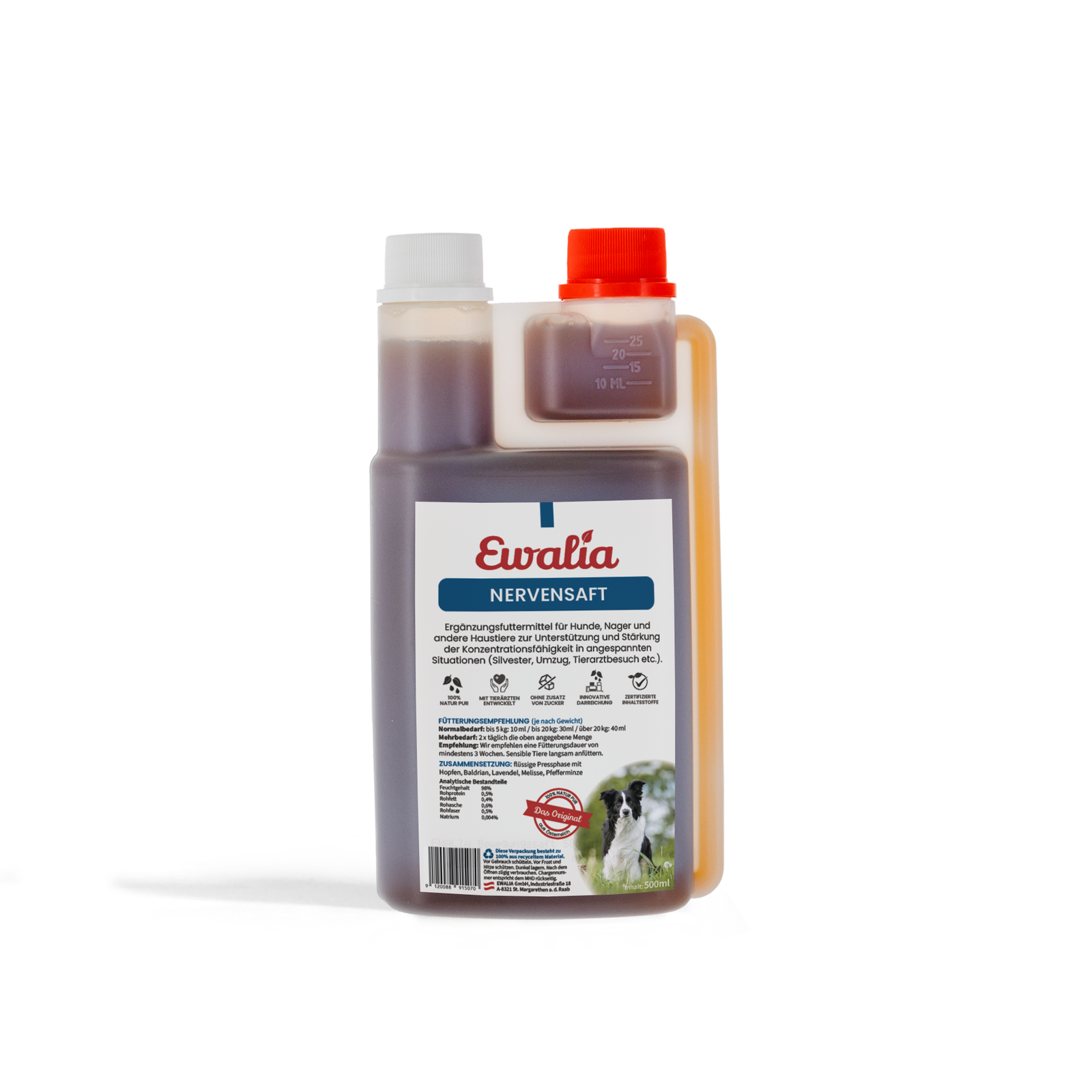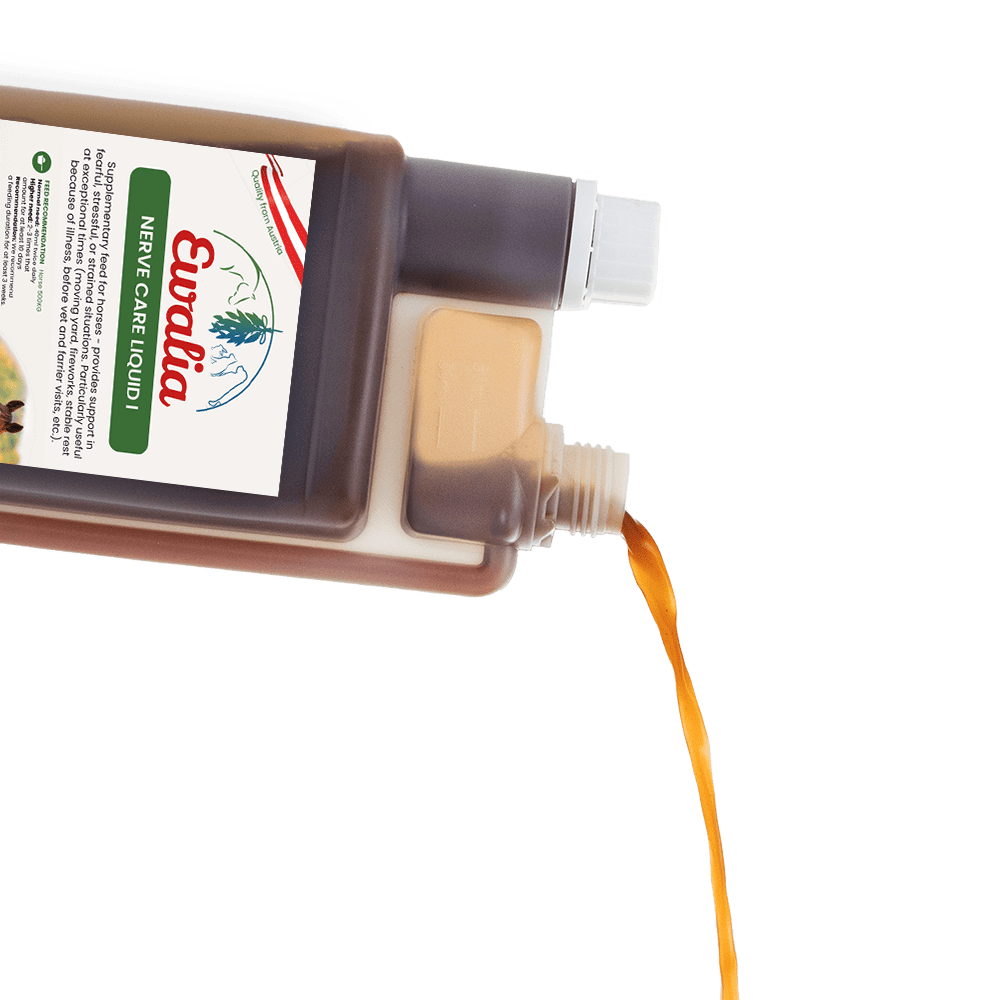Valerian & Valerian Root

Valeriana officinalis & Valerianae radix
When veterinary medicine emerged as its own branch of science, valerian was one of the first plants to be described as a healing plant. In human medicine it is used to treat sleep issues and generally to calm the nerves. Valerian can be used to help stressed or anxious horses and dogs, especially after traumatic experiences like accidents or mistreatment.
It also relieves muscle cramps and helps the stomach and digestion. Valerian root's calming effect can be put to use for stress-inducing occasions like New Year's Eve (loud fireworks), veterinary appointments and long trips.
Not everyone likes its characteristic odour, but herbal infusions with valerian are quite popular as feed supplements for animals. Valerian is a traditional home remedy to combat stress, irritability and anxiety in both humans and animals.
Appearance and occurrence of valerian
Valerian, also known as setwall or all-heal, is a perennial plant with pinnate leaves and pale pink flowers in shallow cymes. The plant may grow to reach two metres in height. It grows extensively throughout Europe and Western Asia and is resistant to frost. Valerian's anxiety-relieving, stress-reducing properties come from the root, therefore only the part that grows underground is used in phytotherapy.
Active substances in valerian
Important substances found in valerian are so-called sesquiterpenes such as valerenal, valerenic acid and valeranone, from which valerian takes its name. Other substances include essential oil (bornyl acetate) and glycosides.
Effects and use of valerian
Valerian's extensively researched and proven effects:
- sedative -> calms
- anxiolytic -> relieves anxiety
- anticonvulsant -> works against seizures
- antispasmodic -> works against spasms
- muscle relaxant -> relaxes muscles
- antiulcerogenic -> prevents onset of ulcers
- immunostimulant -> stimulates the immune system
It is therefore used to help lessen general restlessness, anxiety, nervousness and excitability. It rarely takes effect immediately, but rather after a few days of feeding. However, various studies have not yet proven exactly which substance causes valerian's sedative or anxiety-inducing effects. It is assumed that valerian's effectiveness is due to a so-called synergy effect, i.e. the interaction of several substances.
The use of valerian in veterinary medicine
Valerian was used back in the Middle Ages to promote menstruation and to calm the stomach, and its root was also used as a sleep aid and for strong sedation. In veterinary medicine, valerian root is used in powders (salt mixes for livestock) for general nutrition, for chronic diseases of the digestive organs and for colics.
The use of herbal sedatives has clear advantages over the use of synthetic preparations. They are mostly safe for the liver and largely cause no side effects.
A common combination of medicinal plants for anxiety relief and/or calming in cases of central nervous disorders involves valerian, green oats, hops, St John's wort, lavender, balm and passion flower. For horses this mix is often supplemented with L-tryptophan and B vitamins.
Valerian can be used to calm anxious or traumatised dogs such as those who were mistreated or rescued from killing stations. Combined with appropriate training and/or behavioural therapy, valerian can accelerate the process of anxiety release and basic relaxation.
Tips for feeding valerian to horses
Here is a useful tip from the book "Kräuter für Nutz- und Heimtiere" [Herbs for pets and farm animals]: to mask the strong odour of valerian, mix it into the concentrate feed/roughage together with a small amount of fruit vinegar.
Important information about feeding valerian to animals
Do not feed valerian to pregnant or lactating animals, as it can be passed on through the animal's milk. If your animal must be sedated or anaesthetised, the anaesthetist/veterinary surgeon must be informed that it has been fed valerian. In the event of a scheduled sedation, it is recommended to discontinue valerian 14 days prior.
Author: Bianca Becker-Slovacek, 25/05/2020
Sources and further reading
- Aichberger, L., Graftschafter, M., Fritsch, F., Gansinger, D., Hagmüller, W., Hahn-Ramssl, I., . . . Stöger, E. (2012). Kräuter für Nutz- und Heimtiere. Wien: Eigenverlag Phytovet.
- Blaschek, W. (2016). Wichtl - Teedrogen und Phytopharmaka. Stuttgart: Wissenschaftliche Verlagsgesellschaft.
- Brendieck-Worm, C., & Melzig, M. F. (2018). Phytotherapie in der Tiermedizin. Stuttgart: Georg Thieme Verlag KG.
- Reichling, J., Gachnian-Mirtscheva, R., Frater-Schröder, M., Di Carlo, A., & Widmaier, W. (2008). Heilpflanzenkunde für die Veterinärpraxis. Berlin-Heidelberg: Springer Medizin Verlag.















